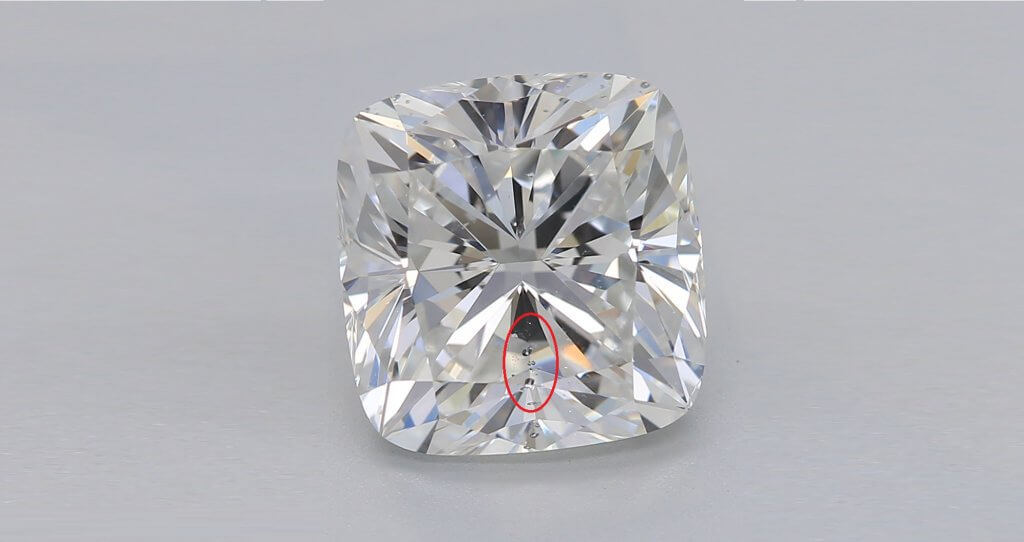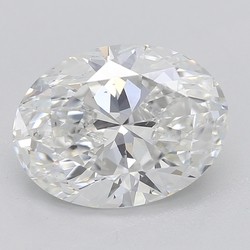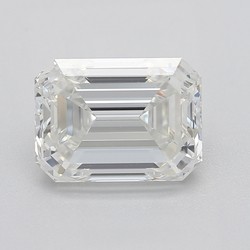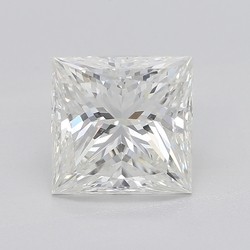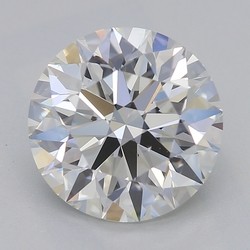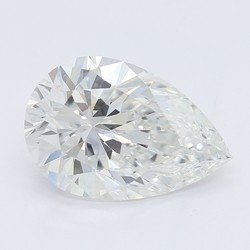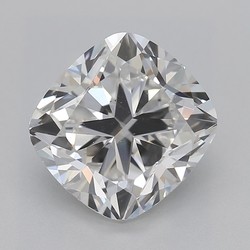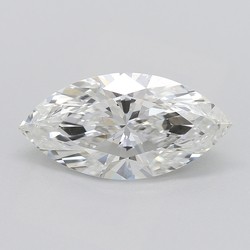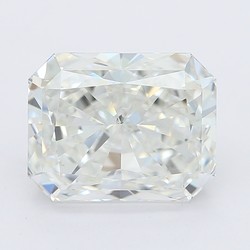Why Flawless Diamonds May Not Be Worth The Investment
Key Takeaways
- Flawless diamonds are incredibly rare. They are highly sought-after, simply because of the rarity of their existence.
- It is important to remember, however, that a flawless diamond is only identifiable under strong magnification. To the naked eye, flawless diamonds will look identical to any eye clean diamond with a much lower clarity grade.
- Investing in an IF or FL diamond is, for the average shopper, a major waste of effort and money – if you can even track one down in the first place.
- It is possible to reach the same goal for your perfect engagement ring with a FL diamond or a lower graded one. The perfection is only noticeable under microscopic scrutiny, so it’s best to forget about them and instead go for something lower on the GIA scale. You will likely find something that will look just as possible for a lower price.
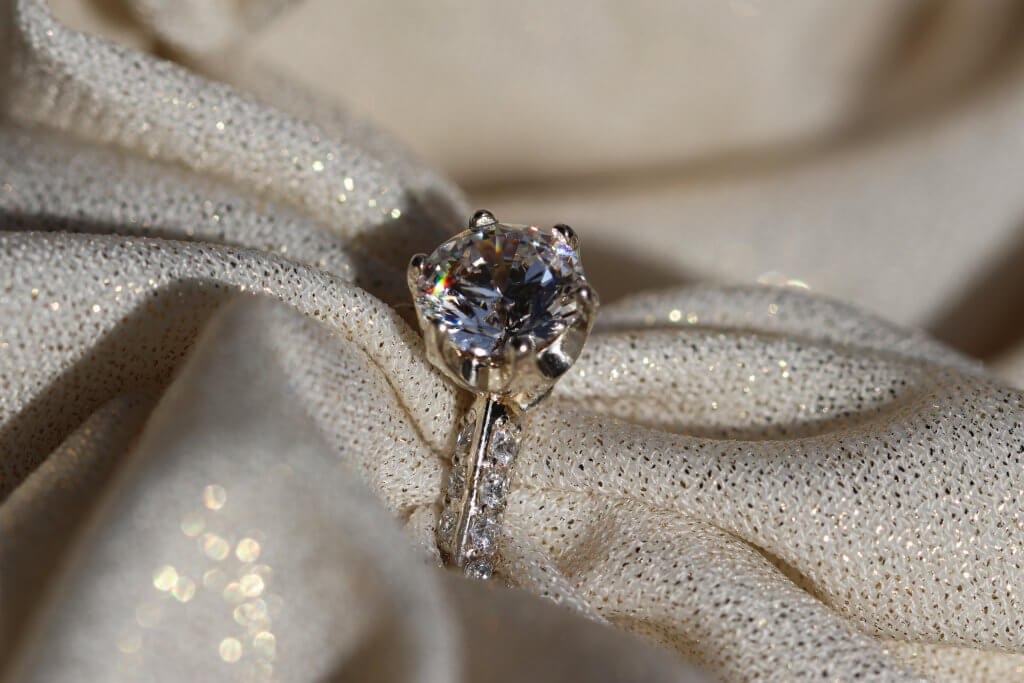
You don’t need us to tell you that finding the perfect diamond engagement ring is not always a walk in the park, and that plenty of people have fallen afoul of ‘buyers’ doubt’ during their own searches. An investment this big requires you to follow your own instincts – to know your partner better, maybe, than she knows herself – but it also requires plenty of research, and the ability to follow fact as much as fancy.
What we mean by ‘the facts’ is, of course, the objective information available on any GIA certified diamond in existence: cut, color, clarity and carat. These four Cs offer a clear snapshot of the ring, its quality and, by extension, its value.
Still, it’s easy to take these Cs a little too literally, and all too common for new shoppers to jump to the conclusion that simply targeting the very top grades for clarity and color is a fool proof tactic for making a good investment.
So, is the ‘most beautiful’ diamond the wisest choice for your future bride? Chances are the answer is no. Here’s why…
What Does FL Mean in Clarity?
Meaning ‘Flawless’, FL is the uppermost grade for clarity on the GIA Scale. It refers to a diamond, under 10x magnification, does not hold any visible inclusions.
These diamonds are also the rarest, since it is incredibly rare for nature to produce something so close to perfection as an FL diamond.
FL diamonds will still have inclusions visible only under extreme magnification – say, 100x – but gemologists only go as far as 10x magnification for grading clarity. They are highly popular among the world’s most avid collectors of diamonds, and so, for that reason, are not something that the casual shopper will see listed for sale.
On the global diamond market, a slightly more common sight is the IF Diamond grade…
What Does IF Mean in Clarity?
An abbreviation of ‘Internally Flawless’, IF diamonds are also free of any inclusions – although they do have very minor blemishes across the surface.
The IF grade sits just below FL on the scale and, while rare in and of itself, is significantly more common than FL. Still, it represents a very small group of diamonds that are brought out of the earth without any detectable inclusions, meaning that stumbling across an IF diamond is still pretty unlikely for the average buyer.
Without magnification and many years’ experience in gemology, FL and IF diamonds look indistinguishable. For this reason, IF diamonds with a D color are generally referred to as being ‘flawless’ too.
How Rare are FL Diamonds?
Fewer than 0.5% of all diamonds are graded at FL.While the microscopic beauty of an FL graded diamond is highly valued among collectors, it is undoubtedly their rarity that makes them so valuable.Why? Because, as we mentioned, many diamonds appear as free from flaws as FL diamonds, so the aesthetic benefits of paying many thousands of dollars for these stones is insignificant. For those who are willing to invest, the allure of FL diamonds primarily stems from the fact that they are highly unlikely phenomena, and one of just a small few in the world today.
What do You Call a Flawless Diamond?
A totally flawless diamond is known as a paragon.
A 137.82 carat diamond known as The Paragon was seen on Naomi Campbell at a diamond gala hosted by renowned jeweler De Beers back in 1999 – but, even on celebrities, diamonds of this worth are rare sights.
In fact, they are thought to comprise less than 0.5% of all diamonds in existence – just in case you needed that put into perspective.
How Can You Tell if a Diamond is Flawless?
By checking the diamond’s official GIA Report, which will offer a definitive clarity grade (FL or IF, in the case of flawless diamonds).
Gemologists cannot just look at a diamond and decide whether or not it’s flawless. Since so many diamonds are eye clean, the diamond market would be filled with so-called FL and IF Diamonds if that were the case.
A gemologist needs powerful tools for magnification, under which they can identify even the smallest inclusions and amend the diamond’s clarity grade accordingly.
So, the only way you will ever be able to feel sure that a diamond is flawless is by learning how to interpret a GIA Diamond Report. We have organized over two million diamond certificates issued by the GIA, and you can use our GIA Report Check during your own search.
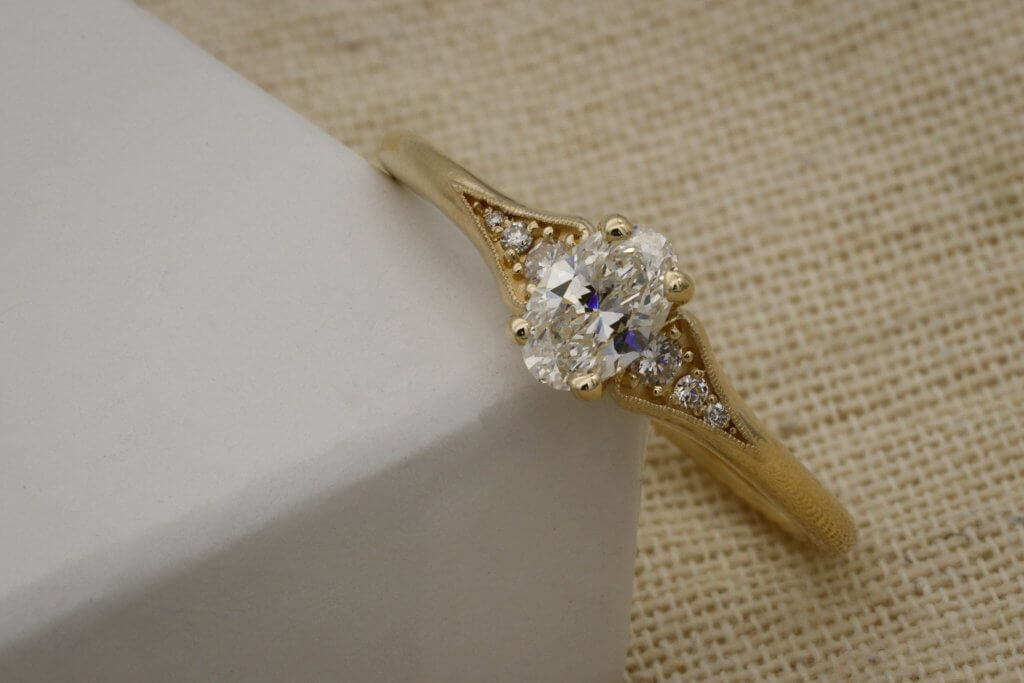
Are Flawless Diamonds Better Than VVS?
Yes, but not for those looking to buy a diamond for an engagement ring. A clarity grade of FL is objectively better than VVS, since the former holds no inclusions – but, visually, they will look the same.
Clarity is decided under a microscope, and only at the lower end of the GIA Clarity Scale will you find diamonds that are visibly included. The rest, while included, appear to be free from any imperfections when viewed with the naked eye. The only noticeable difference between FL and VVS – provided you don’t have a microscope to hand – is the price tag.
Put it this way. The GIA Clarity scale runs from FL and IF, through VVS1 and VVS2, VS1 and VS2, SI1 and SI2, and I1, I2 and I3.
It is possible to find eye clean diamonds graded as (seemingly) low as SI1 – and that’s six grades below the perfection of an FL grade.
So, if you’re looking for an eye clean diamond, you can afford to stray much further from FL than you might realize – and save yourself thousands of dollars in the process. And, while FL is demonstrably ‘better’ than VVS (or any other grade on the GIA Scale, for that matter) it’s not the best choice for you, or your bride-to-be.
How Much is a 1 Carat Flawless Diamond Worth?
A 1 carat FL diamond with excellent cut and color grades will likely cost upwards of $10,000, with the price rising exponentially with carat weight.
At smaller sizes (around 1 carat) the cost of a flawless diamond can be more than a third higher than the cost of a VVS diamond with a comparable carat weight, cut and color. At higher carat weights, the price can quickly escalate into five – or even six – figures, simply because the FL and IF grades are so highly coveted among collectors.
As a result, these diamonds are not intended to be purchased by those looking to find a center stone for an engagement ring. In fact, while diamond is an incredibly strong substance, it will quickly lose its status as ‘Flawless’ when mounted within jewelry, since even the most minor blemishes (surface flaws) will occur during this process, and during wear.
Do Flawless Diamonds Sparkle More?
No – flawless diamonds will look identical to eye clean diamonds with lower clarity grades, unless you’re scrutinizing them through a microscope.
By far the most important factor impacting sparkle is cut. Some cuts sparkle more than others, with the 58-faceted round cut stealing the show in terms of sparkle.
Clarity can impact sparkle, but only when a diamond’s clarity is so low that it features significant and visible inclusions. For instance, cloudy diamonds are considered highly undesirable for jewelry because of the fact that their inclusions prevent them from sparkling – and, instead, they look pretty lackluster.
But, as we’ve mentioned above, many diamonds – even those that are several grades away from Flawless – appear eye clean, or have only the most minor inclusions, and they will sparkle just as beautifully is an unincluded diamond.
Should I Buy a Flawless Diamond?
No, we would never advise any of our readers to consider investing in a flawless or internally flawless diamond.
To put it bluntly, FL and IF diamonds are a waste of money for any shopper looking to create the perfect engagement ring for their bride-to-be. Yes, aiming for ‘perfection’ guarantees, well, perfection – but it is possible to reach that same goal with lowered sights.
Thankfully for us, the world of diamonds is not divided between perfection and imperfection – it exists on a spectrum. And, toward the middle of that spectrum (between, say, VS1 and SI1) are thousands of diamonds which can only be differentiated from FL and IF diamonds by two methods: looking at them through a microscope, and looking at their price tags.
For collectors, Flawless diamonds hold a pretty irresistible allure – one that is only really brought to light on paper. Your future bride’s engagement ring is intended to be worn, admired, and enjoyed before your own eyes. She will show her diamond to friends and family – not the GIA Report verifying its perfect internal structure.
Our advice? Forget all about FL and IF diamonds. You’re pretty unlikely to encounter them during your search anyway, and you’d have to go much further down the GIA’s clarity scale before you found any diamond that was visibly inferior to these coveted, rare, and highly priced gemstones.
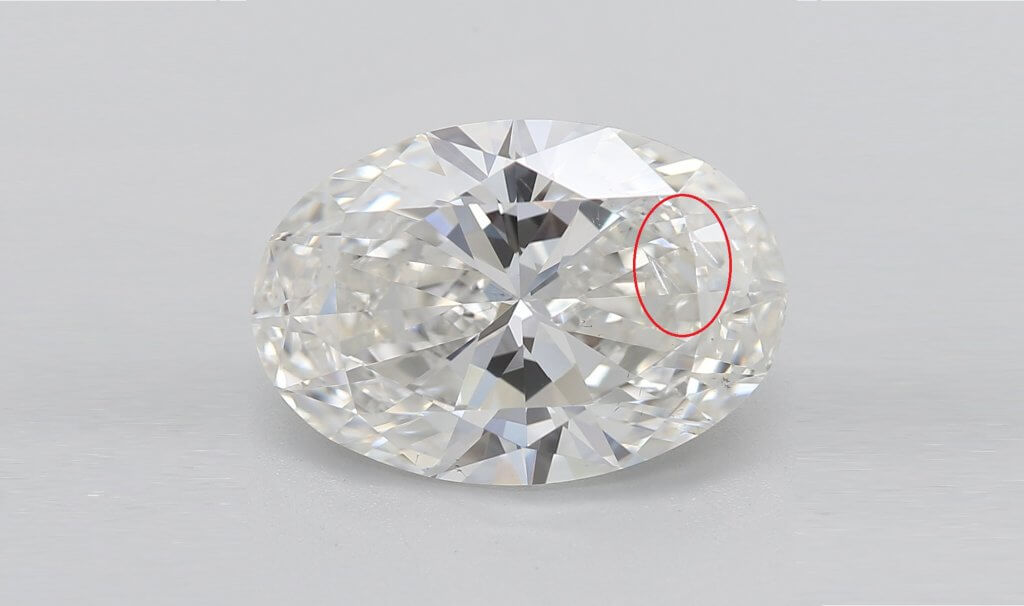
Sep 24, 2021 By Willyou.net
The Surprising Facts About Diamond Feathers

Mar 26, 2022 By Willyou.net
The Negative Effect Of Internal Graining On Diamond’S Value
